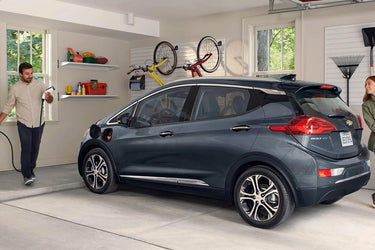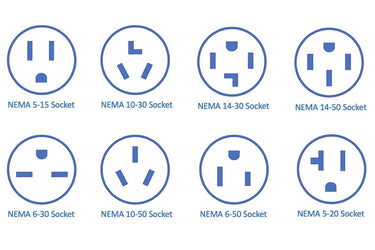
The History of Electric Vehicles - a time capsule
1996—General Motors’ EV1
The Toyota RAV4 EV enabled the public to buy from a highly reputable manufacturer with important standard inclusions, such as warranty and dealer support."
1997—Toyota RAV4 EV
Toyota was also important in the modern chapter of the history of electric vehicles. In 1997 Toyota began selling the RAV4 EV, a variant of their popular gasoline-engine RAV4. Also powered by a nickel-metal hydride battery, the first generation propelled the car for around 95 miles. The vehicle used a factory-supplied, wall-mounted charger that plugged into a standard US 240v dryer socket. California was again the key market with almost 1500 RAV4 EVs sold there – although again, under leasing agreements. Production of the Gen-1 RAV4 EV ran until 2003, after which the general-public purchased the cars as their leases expired.
The RAV4 EV was an important electric vehicle milestone in two ways:
- It expanded the early marketplace for EVs, and
- It enabled the public to buy from a highly reputable manufacturer with important standard inclusions, such as warranty and dealer support.
1997—Toyota Prius
In 1997, Toyota also began production of the Prius, although the vehicle was only available in Japan until 2000. The early Prius was not a pure ‘battery electric vehicle’ but rather an ICE / battery ‘hybrid’. The car was important in the development of EVs because it was a mass-market vehicle genuinely powered—at least in part—by battery. A second-generation Prius was later introduced with significantly better specifications. While there were other important Hybrid EVs around this time—notably the Honda Insight—Toyota’s first- and second-generation Prius was the standout, selling around 1.3 million units, combined.
The Prius also became a virtual poster-child for people wanting to demonstrate their ‘green credentials’ in both a practical and visible way.
2008—Tesla Roadster
The base cost for a new 2019 Leaf is only $29,000 – that’s a great price for an entry-level EV with nearly 250 miles of range!





 1996 GM EV1: The first generation had a lead-acid battery and capacity of approx. 70 miles
1996 GM EV1: The first generation had a lead-acid battery and capacity of approx. 70 miles Toyota's Prius hybrid EV is notable: it's evolved - internally and externally - over more than 20 years.
Toyota's Prius hybrid EV is notable: it's evolved - internally and externally - over more than 20 years.
